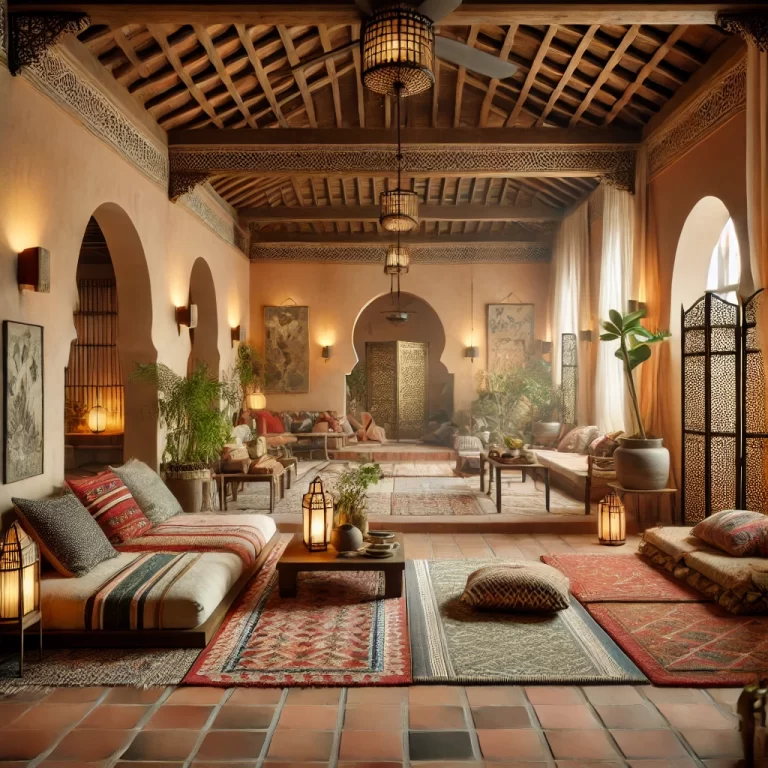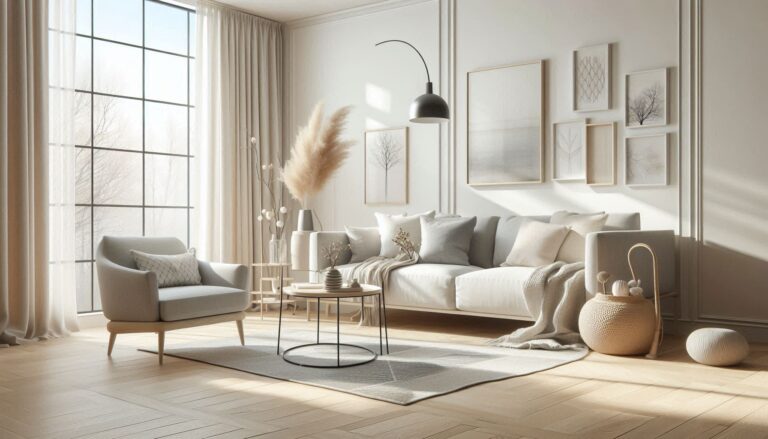Scandinavian Design: A Legacy of Functionality and Simplicity

Scandinavian design has become synonymous with minimalism, practicality, and timeless beauty. Rooted in the cultures of Denmark, Norway, Sweden, and Finland, this design style emphasizes clean lines, functional furniture, and an uncluttered aesthetic. Over the years, it has evolved into one of the most beloved and enduring interior design trends, influencing homes and public spaces around the world. Here’s an exploration of how Scandinavian design has built a lasting legacy of functionality and simplicity.
1. The Essence of Minimalism
At its core, Scandinavian design is defined by minimalism. It is all about “less is more,” where each element serves a specific purpose and unnecessary ornamentation is avoided. The clean, simple lines of furniture and decor create an open, airy feel that fosters a sense of calm and tranquility. Neutral color palettes of whites, grays, and light woods contribute to this aesthetic, promoting an atmosphere of serenity and spaciousness in the home.
2. Emphasis on Functionality
One of the defining aspects of Scandinavian design is its emphasis on functionality. Furniture and decor items are crafted with practicality in mind, without compromising on style. Scandinavian design integrates clean, straightforward forms that are easy to use and versatile. For example, multifunctional pieces, such as sofas that double as storage units or tables with extendable features, are commonplace in Scandinavian interiors, ensuring that every item has a functional role.
3. Natural Materials and Sustainability
Scandinavian design takes inspiration from nature, making use of natural materials like wood, wool, leather, and stone. Light-colored woods, such as oak, pine, and birch, are often used in furniture, creating a sense of warmth and organic beauty. The use of natural textiles like linen and wool also enhances the tactile experience of Scandinavian interiors. The respect for nature extends to a commitment to sustainability, with many Scandinavian designers and manufacturers embracing eco-friendly practices and creating long-lasting products.
4. Bright and Airy Spaces
Given the long, dark winters in the Nordic region, Scandinavian design prioritizes maximizing natural light in interiors. Large windows, open spaces, and light color schemes work together to make rooms feel bright and airy, even during the darkest months of the year. The incorporation of mirrors, glass, and reflective surfaces also enhances the flow of natural light, creating an environment that feels open and inviting.
5. Function Meets Beauty: The Role of Design Objects
Scandinavian design effortlessly blends beauty with function. Everyday objects, such as lighting fixtures, kitchenware, and storage solutions, are designed not only to serve their intended purpose but also to elevate the aesthetics of the space. Iconic pieces, like the Arne Jacobsen Egg Chair or the light, minimalist lamps by Poul Henningsen, are perfect examples of how Scandinavian design transforms the ordinary into the extraordinary, making functional items works of art in their own right.
6. Neutral Color Palettes with Accent Hues
While Scandinavian interiors are often dominated by neutral tones—think whites, grays, and blacks—the addition of accent colors can bring warmth and personality to the space. Soft pastels, muted blues, and rich earth tones are frequently used in textiles, cushions, and artwork to introduce a touch of color without overwhelming the senses. The careful use of accent hues ensures the space remains harmonious and soothing, adhering to the overall aesthetic of simplicity and balance.
7. Scandinavian Hygge: The Art of Cozy Living
One of the key principles in Scandinavian design is the concept of hygge (pronounced “hoo-ga”), which refers to a cozy, warm atmosphere that encourages relaxation and togetherness. This concept is reflected in the design of Scandinavian homes, where comfort is prioritized alongside functionality. Plush textiles, soft throws, wool rugs, and ambient lighting create a welcoming environment where people can unwind and enjoy the simple pleasures of life. Hygge emphasizes emotional well-being, fostering spaces that are both beautiful and comforting.
8. Embracing Simplicity in Decor
Decorating in Scandinavian style often involves keeping things simple and uncluttered. Instead of overwhelming a space with numerous decorative items, Scandinavian interiors embrace a “less is more” philosophy, where every item has a purpose. Decorative elements such as art prints, ceramics, or plants are thoughtfully chosen to enhance the overall aesthetic and bring personality to the space without overcrowding it. This approach results in interiors that feel peaceful and easy to live in.
9. Cultural Influence and Tradition
Scandinavian design is deeply rooted in the region’s cultural heritage, drawing inspiration from the natural landscapes, long-standing craft traditions, and practical needs of the Nordic people. This design ethos was heavily influenced by the Bauhaus movement and the Arts and Crafts movement, which promoted the idea that form should follow function. As a result, Scandinavian interiors often feature handcrafted elements, such as woven rugs, wooden furniture, and hand-thrown ceramics, which carry a sense of authenticity and craftsmanship.
10. Scandinavian Design’s Global Impact
What started as a regional design movement in the early 20th century has grown into a global phenomenon. Today, Scandinavian-inspired design is found in homes, offices, hotels, and public spaces worldwide. Its focus on simplicity, functionality, and sustainability resonates with modern sensibilities, making it a timeless and enduring style.
Conclusion
Scandinavian design’s legacy of functionality and simplicity has shaped the way we approach interior design, combining beauty with practicality in a way that is both timeless and contemporary. Its minimalist aesthetic, focus on natural materials, and respect for sustainability continue to influence designers and homeowners alike. By embracing the principles of Scandinavian design, one can create spaces that are not only visually stunning but also comfortable, functional, and reflective of a deep cultural appreciation for simplicity and craftsmanship.






